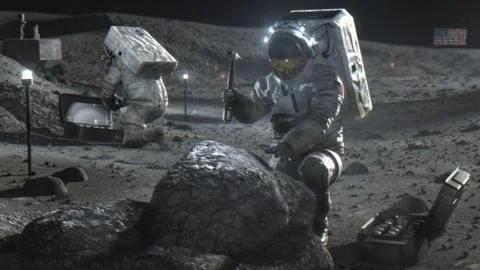Breathing New Life: Innovations for Oxygen Production on the Moon
In a pivotal experiment at NASA’s Johnson Space Center, engineers from Sierra Space are developing a groundbreaking box-like machine designed to extract oxygen from lunar regolith. This project aims to support future lunar bases by providing astronauts the essential oxygen they need for both breathing and rocketry fuel, thus reducing the reliance on costly supplies shipped from Earth. During tests, the machine heated regolith to over 1,650°C, demonstrating the feasibility of releasing oxygen by inducing chemical reactions in the lunar soil.
The extraction of oxygen from lunar resources could drastically lower mission costs; a significant deviation from the current method of transporting oxygen from Earth. However, the moon’s unique environment poses challenges, particularly the low gravity which affects the operation of chemical extraction processes. The team is focused on enhancing their technology to withstand the abrasive nature of lunar regolith and adapting to simulate lunar conditions, including reduced gravity.
Researchers like Paul Burke from Johns Hopkins University are investigating alternative methods of oxygen extraction, such as molten regolith electrolysis. This process encounters challenges in low gravity, where oxygen bubbles formed in the viscous regolith may not detach properly due to weaker gravitational pull. Innovations such as vibrating machines or using smoother electrodes are potential solutions.
Beyond life support, there is a strong emphasis on producing oxidizers for rocket fuel, integral for furthering deep space exploration. The team’s research also hints at the possibility of deriving essential metals from regolith, providing materials for 3D printing components on the moon, alongside building materials from melted regolith. This could revolutionize lunar habitation and pave the way for sustainable human presence in outer space.

